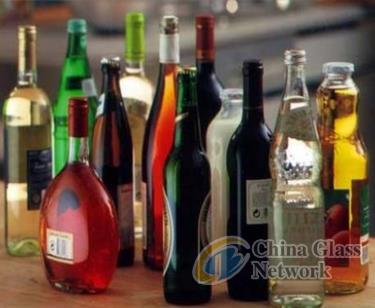Post Time:May 06,2016Classify:Industry NewsView:432
The latest report from Research and Markets shows that the global Glass Packaging market is projected to reach US$55 billion by 2020.

This increase will be driven by the rising consumption of alcoholic beverages where glass is the preferred packaging material and increasing awareness over the environmental and health benefits of glass packaging.
Glass represents an unbeatable option as a packaging material supported by its superior attributes of sterility, reusability, chemical stability, durability, non-permeability and malleability and by virtue of it being hygienic, eco-friendly, and aesthetically pleasing. Key application areas for this evergreen rigid packaging type include beverages, food products, pharmaceuticals, cosmetics, and chemicals, among others. The growth in the market is driven by the rising consumption of alcoholic beverages as well as increasing sales of beauty and personal care products in emerging markets. Other important growth drivers include rising demand for healthy, ethnic and organic food products, and increasing emphasis on using eco-friendly recyclable material. With an unlimited recyclable life, glass ranks high on the parameters laid down for the environmentally most desired packaging type. For every ton of recycled glass, a ton of natural resources are saved, while reducing carbon dioxide emission by a ton with every six tons of container glass recycled.
One of the major challenges facing the packaging industry is the steady cannibalization by alternative packaging formats such as plastics. However, increasing environmental issues with plastics coupled with increased focus on glass innovation, in terms of both quality and appeal, are expected to sustain market growth in the coming years. Newer technologies of shaping, embossing and adding decorative finishes are helping make glass packaging more desirable. 'Lightweighting' and tempered glass represent major innovations that are poised to benefit market expansion in the near term. Offering the same resistance as that of the older, heavier containers, light weighting imparts higher stability and strength to glass, while reducing the volume of raw materials used and CO2 emitted. Increasing demand for sustainable, green and pure beverage and food packaging is also expected to drive major growth in the market in the long term.
As stated by the new market research report on Glass Packaging, Asia-Pacific represents the largest market worldwide, closely followed by Europe. The region also represents the fastest growing market with a CAGR of 5.0% in value terms over the analysis period. Emerging markets such as China and India are witnessing increased consumption of glass packaging driven by rising disposable incomes, increasing per capita spending, changing lifestyles and rising demand for beer, cider and soft drinks, among others. The growing food market in the region will provide the required impetus for growth, supported by the popularity of glass-packaged food products such as dairy, spreads, syrups, dressings, sauces and seasonings in several Asian countries. China represents the largest glass packaging market in the region by virtue of it being the largest global market for beer where glass bottles are the primary packaging type.
Key players covered in the report include Allied Glass Containers Ltd., Anadolu Cam Sanayii A.S., Ardagh Glass Group S.A., Anchor Glass Container Corporation, Bormioli Rocco SpA, Borosil Glass Works Ltd., Consol Speciality Glass (Pty) Ltd., Gerresheimer Group, Heinz-Glas Group Holding HGGH GmbH & Co. KGaA, Koa Glass Co., Ltd., Nihon Yamamura Glass Co., Ltd., Owens-Illinois, Inc., Piramal Glass Limited, Saint-Gobain, Toyo Seikan Group Holdings, Inc., Vetropack Holding AG, and Vitro Packaging, LLC., among others.
Source: www.glassonline.comAuthor: shangyi